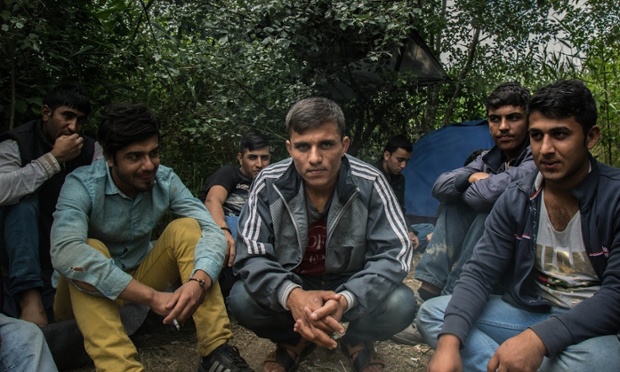Hungary is sending 20 police officers and will install thermal imaging cameras to help monitor Serbia’s southern borders, in an attempt to stop a growing number of refugees from making their way into the European Union through Macedonia and Serbia. This move follows heightened tension between Budapest and Belgrade, after the Orbán government’s unilateral decision to erect a four metre-high fence along the 175 km stretch of border between the two countries. Hungarian police are expected to begin patrolling the Serbian/Macedonian border at the start of July and the four thermal imaging cameras will be installed by Hungary at the same time.
Additionally, Hungary, Serbia and Austria have decided to establish a joint investigative unit, in order to combat human trafficking.
The deal was struck by Károly Papp, Hungary’s national chief of police, during a meeting with his Serbian counterpart, Milorad Veljovics, in Csongrád county. Csongrád borders Serbia and has been the point of entry for many of the 48,000 refugees and migrants that have sought asylum in Hungary during the first five months of the year.

These Afghan refugees hide in the forests of Vojvodia, Serbia, awaiting the safest moment to cross into Hungary. Photo: Sima Diab/The Guardian.
While Prime Minister Viktor Orbán’s government is steadfast in claiming that the bulk of the arrivals are economic migrants (and in Hungary, this has taken on a decidedly and undeservedly negative connotation), the numbers suggest otherwise. For instance, 10,192 Afghan citizens and 5,867 Syrians have sought refuge in Hungary, as well as nearly 2,000 people from Iraq. The proportion of Kosovars arriving in Hungary is shrinking, while the number fleeing conflict in the Middle East and Central Asia is increasing markedly.
The Guardian published an excellent, insightful report today on the situation along the border between Hungary and Serbia. Here’s an excerpt:
“A 23-year-old pharmacist, Mohamed Hussein, absent-mindedly decides to light a cigarette. “Put it out!” comes the collective hiss, betraying a rising sense of fear. Several in this group have previously been jailed for a fortnight by the Hungarian police after crossing the border, before being returned to Serbia. Now they’re trying again.The border between Greece and Macedonia was very easy,” whispers Selim, a 36-year-old Syrian sales manager, whose home in old Aleppo was destroyed by an army rocket. “But this is the most difficult bit, the Hungarian border.” And it is about to get a lot harder. Last week, Hungary’s illiberal government began drawing up plans to stop people like Selim and Hussein – by building a four-metre high fence along its 110-mile (177km) border with Serbia.”
A local Hungarian priest near the border told the The Guardian that he spots an average of 200 or so refugees crossing into Hungary each day, largely from Afghanistan. Many of the asylum-seekers pay upwards of €10,000 to flee to Hungary and into the EU. Fr. Tibor Varga distributes food to refugees camped out at an abandoned brick factory. Dozen of migrants also hide in the sweetcorn fields of southern Hungary, evading authorities. According to The Guardian report, the refugees call this part of southern Hungary “the jungle.”
Some of the refugees speaking to the British journalists noted that the wall that Hungary is planning on building will not deter them. It remains to be seen if the Hungarian authorities that will now help patrol southern Serbia will have any success in slowing the tide of desperate people fleeing from their war-torn homes.



